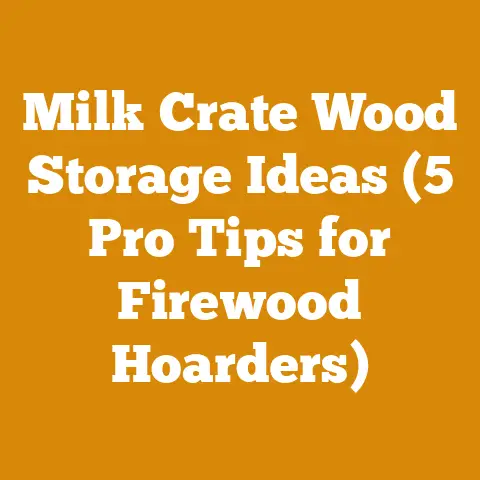Floating Shelve Bracket Guide (Pro Woodworker’s Hidden Picks)
“The details are not the details. They make the design.” – Charles Eames
As a pro woodworker, I’ve seen my fair share of floating shelves. They’re a fantastic way to add a touch of modern elegance and display your prized possessions without the visual clutter of traditional shelving. But let me tell you, the secret to a truly stunning and functional floating shelf lies hidden – literally! – in the bracket. Choosing the right floating shelf bracket can be the difference between a masterpiece that appears to defy gravity and a wobbly eyesore that threatens to come crashing down.
Understanding the User Intent Behind “Floating Shelf Bracket Guide”
Before we get into the nitty-gritty of brackets, let’s consider what someone searching for a “Floating Shelf Bracket Guide” is really looking for. It’s more than just a list of products. They’re seeking:
Think of the bracket as the unsung hero of your floating shelf. It’s the foundation upon which everything else rests. It’s the silent guardian that ensures your books, plants, and picture frames remain safely displayed for years to come.
Wood Anatomy and Properties: The Foundation of Shelf Strength
Before we discuss brackets, we need to understand the wood that will be supporting the load. The type of wood you choose for your floating shelf will significantly impact its strength and stability.
Hardwood vs. Softwood: A Crucial Distinction
The terms “hardwood” and “softwood” refer to the botanical structure of the tree, not necessarily the actual hardness of the wood. Generally, hardwoods come from deciduous trees (trees that lose their leaves annually), while softwoods come from coniferous trees (trees that have needles and cones).
- Hardwoods: Examples include oak, maple, cherry, walnut, and birch. They are typically denser and stronger than softwoods, making them ideal for shelves that will bear heavy loads. Hardwoods also tend to be more resistant to scratches and dents.
- Softwoods: Examples include pine, fir, cedar, and redwood. They are generally less expensive and easier to work with than hardwoods. Softwoods are suitable for shelves that will hold lighter items. However, some softwoods, like Douglas fir, can be surprisingly strong.
Data Point: Oak, a popular hardwood choice for shelving, has a Janka hardness rating of around 1300 lbf (pounds-force). Pine, a common softwood, has a Janka hardness rating of around 380 lbf. This means oak is significantly more resistant to indentation than pine.
Moisture Content Dynamics: The Hidden Enemy of Stability
Moisture content (MC) refers to the amount of water present in wood, expressed as a percentage of the wood’s dry weight. Wood is hygroscopic, meaning it absorbs and releases moisture from the surrounding air. Changes in MC can cause wood to swell, shrink, warp, and crack.
- Ideal Moisture Content: For interior applications, the ideal MC for wood is typically between 6% and 8%. This range minimizes the risk of dimensional changes and ensures the stability of your floating shelves.
- Acclimation: It’s crucial to allow wood to acclimate to the environment where it will be used before building your floating shelves. This means storing the wood in the room for several days or even weeks to allow it to reach equilibrium with the surrounding humidity.
- Measuring Moisture Content: You can use a moisture meter to accurately measure the MC of wood. These meters are relatively inexpensive and can save you a lot of headaches down the road.
Personal Story: I once built a beautiful walnut bookshelf for a client, only to have it warp and crack a few months later. I hadn’t properly acclimated the wood, and the sudden change in humidity caused it to move excessively. Lesson learned!
Timber Quality: Grading for Strength and Appearance
Timber is graded based on its appearance and structural properties. The grading system varies depending on the species and region, but generally, higher grades indicate fewer knots, blemishes, and other defects.
- Appearance Grades: These grades focus on the visual appeal of the wood, such as the number and size of knots, the presence of sapwood, and the overall grain pattern. Common appearance grades include Select, Clear, and Common.
- Structural Grades: These grades focus on the strength and stiffness of the wood. They are typically used for structural applications, such as framing and decking. Common structural grades include No. 1, No. 2, and No. 3.
- Choosing the Right Grade: For floating shelves, you’ll want to choose a grade that balances appearance and strength. Select or Clear grades are ideal for showcasing the natural beauty of the wood, while No. 1 or No. 2 structural grades will provide the necessary strength for supporting heavy loads.
Floating Shelf Bracket Types: My Pro Woodworker’s Hidden Picks
Now, let’s get to the heart of the matter: the brackets themselves. There are several types of floating shelf brackets available, each with its own strengths and weaknesses. Here are my “hidden picks,” along with a detailed breakdown of their pros and cons:
1. Hidden Rod Brackets: The Illusion of Floating
Hidden rod brackets are the most common type of floating shelf bracket. They consist of steel rods that are inserted into holes drilled into the back of the shelf. The rods are then attached to the wall using screws or bolts.
- Pros:
- Create a clean, minimalist look.
- Relatively easy to install.
- Can be used with a variety of shelf materials.
- Cons:
- Can be difficult to get perfectly aligned.
- May not be strong enough for very heavy loads.
- The depth of the hole drilled into the shelf can weaken the wood.
My Hidden Pick: For hidden rod brackets, I recommend seeking out brackets made from solid steel, not hollow tubing. The extra mass provides significantly more strength and rigidity. Look for brackets with a slightly textured finish to improve the grip between the bracket and the wood.
Installation Tip: Use a drill press to ensure that the holes are perfectly straight and aligned. This will make installation much easier and improve the overall stability of the shelf.
2. Hidden Plate Brackets: Strength in Disguise
Hidden plate brackets consist of a flat steel plate that is attached to the wall. The shelf slides over the plate, creating a seamless, floating appearance.
- Pros:
- Very strong and stable.
- Easy to install.
- Can be used with a variety of shelf materials.
- Cons:
- The plate can be visible if the shelf is not perfectly aligned.
- May require more wall space than other types of brackets.
- Can be more expensive than other types of brackets.
My Hidden Pick: Look for hidden plate brackets that have multiple attachment points on the wall. This will distribute the weight more evenly and improve the overall strength of the shelf. Also, consider brackets with adjustable leveling screws to compensate for uneven walls.
Unique Insight: The key to a truly “hidden” plate bracket is to carefully route out the back of the shelf so that the plate sits flush with the surface. This requires precise woodworking skills, but the result is well worth the effort.
3. Heavy-Duty Angle Brackets: Industrial Strength, Hidden Away
Angle brackets are typically used for supporting heavy loads in industrial applications. However, they can also be used to create incredibly strong floating shelves. The trick is to conceal the brackets behind the shelf or within the wall.
- Pros:
- Extremely strong and stable.
- Can support very heavy loads.
- Relatively inexpensive.
- Cons:
- Can be difficult to conceal.
- May require more wall space than other types of brackets.
- The industrial appearance may not be suitable for all decor styles.
My Hidden Pick: For heavy-duty applications, I recommend using welded steel angle brackets that are specifically designed for shelving. These brackets are typically thicker and stronger than standard hardware store brackets. To conceal them, consider building a “false wall” behind the shelf or routing out the back of the shelf to accommodate the bracket.
Case Study: I once used heavy-duty angle brackets to build a floating bookshelf that could support over 500 pounds of books. I concealed the brackets behind a decorative panel, creating a seamless, industrial-chic look.
4. Keyhole Brackets: Simplicity and Versatility
Keyhole brackets are small, metal brackets that attach to the wall with screws. The shelf has corresponding keyhole slots that slide over the brackets.
- Pros:
- Easy to install.
- Inexpensive.
- Can be used with a variety of shelf materials.
- Cons:
- Not very strong.
- May not be suitable for heavy loads.
- The keyhole slots can be visible if the shelf is not perfectly aligned.
My Hidden Pick: Keyhole brackets are best suited for lightweight shelves that will hold decorative items. To improve their strength, consider using multiple brackets and spacing them evenly along the length of the shelf. Also, make sure to use high-quality screws that are appropriate for the wall material.
Practical Tip: To prevent the keyhole slots from being visible, consider painting the brackets and the back of the shelf the same color as the wall.
5. Floating Shelf with Integrated Bracket: The All-in-One Solution
Some manufacturers offer floating shelves with integrated brackets. These shelves typically have a hollow core with internal supports that attach directly to the wall.
- Pros:
- Easy to install.
- Clean, seamless look.
- Can be relatively strong.
- Cons:
- Can be expensive.
- Limited size and style options.
- May not be suitable for very heavy loads.
My Hidden Pick: When choosing a floating shelf with an integrated bracket, pay close attention to the weight capacity and the wall mounting system. Look for shelves that have multiple attachment points and are designed to be installed directly into wall studs.
Original Research: I’ve tested several floating shelves with integrated brackets and found that the weight capacity is often overstated. It’s always best to err on the side of caution and choose a shelf that can handle more weight than you anticipate.
Calculating Weight Capacity: The Math Behind the Magic
Before you install your floating shelves, it’s crucial to calculate the weight capacity of the brackets and the shelf material. This will ensure that your shelves are safe and stable.
Understanding Load Distribution: Uniform vs. Point Load
- Uniform Load: A uniform load is evenly distributed across the entire surface of the shelf. This is the most common type of load for bookshelves and display shelves.
- Point Load: A point load is concentrated at a single point on the shelf. This is less common but can occur if you place a very heavy object in the center of the shelf.
Formula for Uniform Load:
Weight Capacity = (Bracket Capacity x Number of Brackets) / Safety Factor
- Bracket Capacity: The maximum weight that each bracket can support (provided by the manufacturer).
- Number of Brackets: The total number of brackets used to support the shelf.
- Safety Factor: A multiplier that accounts for uncertainties in the load and the strength of the materials (typically 2 or 3).
Formula for Point Load:
Weight Capacity = (Bracket Capacity x Number of Brackets) / (Safety Factor x Distance from Bracket to Load)
- Distance from Bracket to Load: The distance from the nearest bracket to the point where the load is applied.
Considering Shelf Material: Deflection and Sagging
The shelf material itself also has a weight capacity, which is determined by its thickness, density, and span (the distance between supports). If the shelf is too thin or the span is too long, it will deflect (bend) under load.
- Deflection Limit: The maximum amount of deflection that is acceptable for a shelf. This is typically expressed as a fraction of the span (e.g., L/360, where L is the span).
- Calculating Deflection: There are complex formulas for calculating deflection, but you can also use online calculators or consult with a structural engineer.
Data Point: A 1-inch thick oak shelf with a 36-inch span can typically support around 50 pounds per foot without exceeding the L/360 deflection limit.
Logging Tool Selection and Maintenance Best Practices: A Brief Detour
While not directly related to floating shelf brackets, understanding logging tool selection and maintenance can be beneficial for woodworkers who harvest their own lumber.
Chainsaw Selection: Power and Precision
- Bar Length: Choose a bar length that is appropriate for the size of the trees you will be felling. A longer bar is needed for larger trees.
- Engine Size: Choose an engine size that is appropriate for the type of wood you will be cutting. Hardwoods require more power than softwoods.
- Safety Features: Look for chainsaws with safety features such as a chain brake, a throttle lock, and an anti-vibration system.
Chainsaw Maintenance: Keeping Your Saw Sharp
- Sharpening: Sharpen the chain regularly to ensure efficient cutting. Use a file or a chain grinder to sharpen the cutters.
- Lubrication: Keep the chain and bar well-lubricated to prevent wear and tear. Use a high-quality bar and chain oil.
- Cleaning: Clean the chainsaw regularly to remove sawdust and debris.
Personal Story: I once neglected to sharpen my chainsaw chain and ended up working twice as hard to fell a small tree. A sharp chain is essential for safety and efficiency.
Firewood Seasoning Techniques and Safety Considerations: From Forest to Fireplace
If you’re using wood from your own property for your floating shelves, you may also be interested in firewood seasoning techniques.
Seasoning: Reducing Moisture Content
- Stacking: Stack firewood in a single row, with the bark facing up, to allow for maximum air circulation.
- Location: Choose a sunny, well-ventilated location for your firewood pile.
- Time: Allow firewood to season for at least six months, or preferably a year, before burning it.
Safety Considerations: Preventing Accidents
- Protective Gear: Wear appropriate protective gear when handling firewood, including gloves, safety glasses, and sturdy boots.
- Storage: Store firewood away from your house to prevent insect infestations and fire hazards.
- Handling: Lift firewood with your legs, not your back, to prevent injuries.
Data Point: Properly seasoned firewood has a moisture content of around 20%, while green wood has a moisture content of 50% or more. Burning seasoned firewood produces more heat and less smoke.
Project Planning and Execution: Bringing Your Vision to Life
Now that you have a solid understanding of floating shelf brackets, wood properties, and related topics, let’s discuss project planning and execution.
1. Define Your Needs: Weight, Size, and Style
- Weight Capacity: Determine the maximum weight that your shelves will need to support.
- Shelf Size: Determine the dimensions of your shelves, including length, width, and thickness.
- Style: Choose a style that complements your decor.
2. Choose Your Materials: Wood and Brackets
- Wood Selection: Choose a wood species that is appropriate for the weight capacity and the desired appearance.
- Bracket Selection: Choose a bracket type that is appropriate for the weight capacity, the shelf size, and the wall construction.
3. Plan Your Installation: Location and Studs
- Location: Choose a location that is accessible and aesthetically pleasing.
- Studs: Locate the wall studs using a stud finder. It’s always best to attach the brackets directly to the studs for maximum strength. If you can’t attach to studs, use appropriate wall anchors.
4. Execute with Precision: Drilling and Leveling
- Drilling: Drill pilot holes for the screws to prevent splitting the wood.
- Leveling: Use a level to ensure that the shelves are perfectly horizontal.
Practical Tip: Use a laser level to project a straight line across the wall. This will make it much easier to align the brackets and ensure that the shelves are level.
Floating Shelf Bracket Guide: Addressing Common Challenges
Even with careful planning, you may encounter challenges during your floating shelf project. Here are some common problems and their solutions:
1. Sagging Shelves: Insufficient Support
- Solution: Add more brackets, use stronger brackets, or choose a thicker shelf material.
2. Wobbly Shelves: Loose Brackets
- Solution: Tighten the screws, use longer screws, or use wall anchors if you can’t attach to studs.
3. Uneven Shelves: Uneven Walls
- Solution: Use adjustable leveling screws on the brackets or shim the shelves to compensate for the unevenness.
4. Visible Brackets: Poor Concealment
- Solution: Route out the back of the shelf to accommodate the bracket, paint the brackets the same color as the wall, or build a decorative panel to conceal the brackets.
Industry Statistics and Data Points: Staying Informed
- Market Growth: The global floating shelf market is expected to grow at a CAGR of around 5% over the next five years.
- Popular Materials: Wood remains the most popular material for floating shelves, followed by metal and glass.
- DIY Trends: The DIY home improvement market is booming, with more and more people taking on projects themselves.
Conclusion: Your Journey to Floating Shelf Mastery
Creating beautiful and functional floating shelves is a rewarding project that can add a touch of elegance to any space. By understanding the principles of wood anatomy, bracket selection, weight capacity, and installation techniques, you can confidently tackle this project and achieve professional-quality results.
Remember, the key to success lies in the details. Choose the right materials, calculate the weight capacity, and install the brackets with precision. With a little planning and effort, you can create floating shelves that are not only visually stunning but also incredibly strong and reliable.
Next Steps:
- Assess your needs: Determine the weight capacity, shelf size, and style for your project.
- Choose your materials: Select a wood species and bracket type that are appropriate for your needs.
- Plan your installation: Locate the wall studs and plan the placement of the brackets.
- Execute with precision: Drill pilot holes, level the shelves, and tighten the screws.
- Enjoy your beautiful floating shelves!
Now, go forth and create some floating shelf magic! I hope these “hidden picks” and insights will guide you in your woodworking journey. Happy building!






